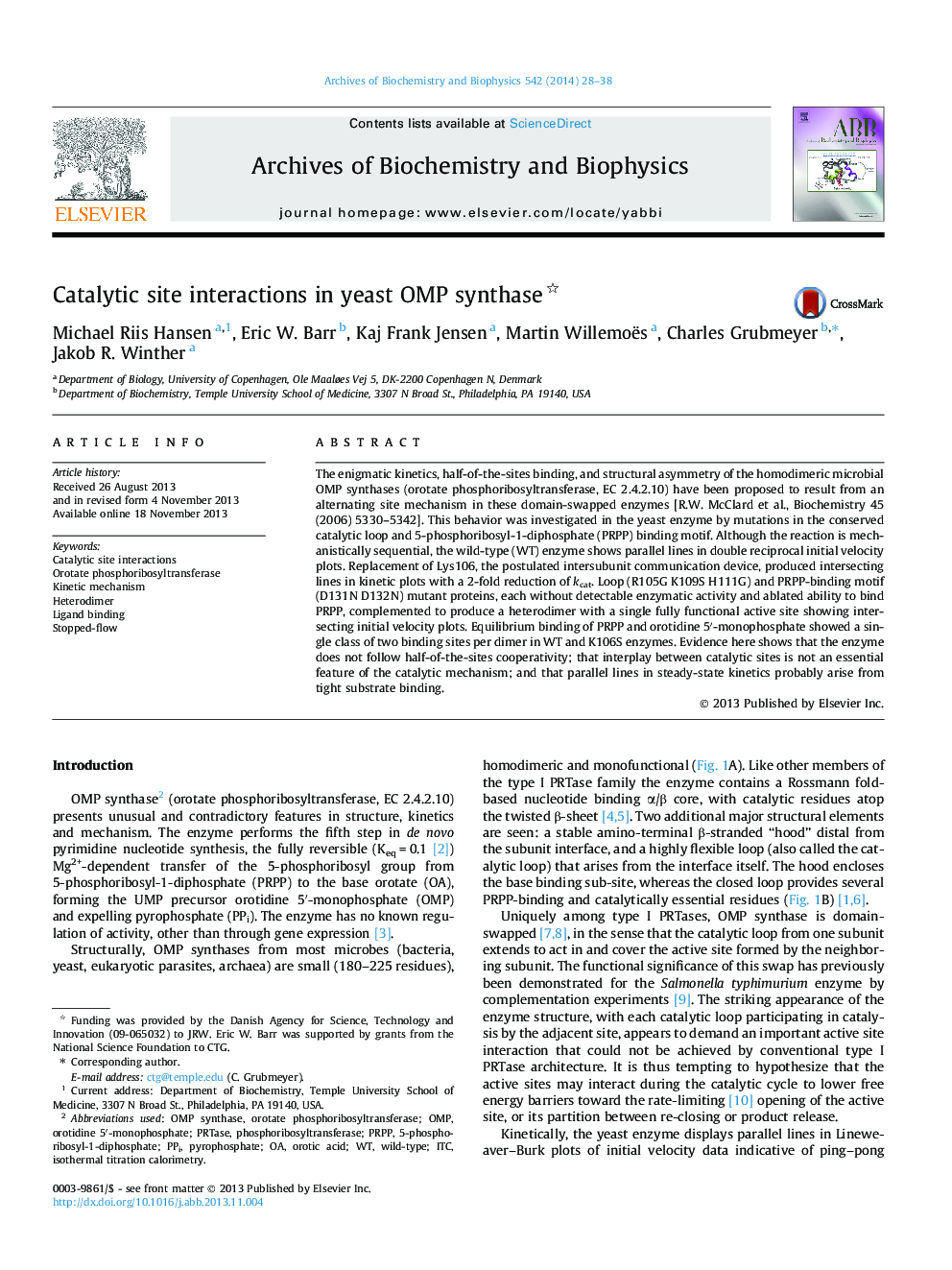| Article ID | Journal | Published Year | Pages | File Type |
|---|---|---|---|---|
| 1925273 | Archives of Biochemistry and Biophysics | 2014 | 11 Pages |
•Dimeric yeast OMP synthase binds two molecules of OMP or PRPP per dimer.•Parallel initial velocity plots of WT enzyme become intersecting for K106S enzyme.•Catalytic site (D131N D132N) or catalytic loop (R105G K109S H111G) was ablated.•Ablated enzymes did not bind PRPP or perform catalysis at detectable levels.•Mutants complemented to produce a heterodimer with WT-like kinetic parameters.
The enigmatic kinetics, half-of-the-sites binding, and structural asymmetry of the homodimeric microbial OMP synthases (orotate phosphoribosyltransferase, EC 2.4.2.10) have been proposed to result from an alternating site mechanism in these domain-swapped enzymes [R.W. McClard et al., Biochemistry 45 (2006) 5330–5342]. This behavior was investigated in the yeast enzyme by mutations in the conserved catalytic loop and 5-phosphoribosyl-1-diphosphate (PRPP) binding motif. Although the reaction is mechanistically sequential, the wild-type (WT) enzyme shows parallel lines in double reciprocal initial velocity plots. Replacement of Lys106, the postulated intersubunit communication device, produced intersecting lines in kinetic plots with a 2-fold reduction of kcat. Loop (R105G K109S H111G) and PRPP-binding motif (D131N D132N) mutant proteins, each without detectable enzymatic activity and ablated ability to bind PRPP, complemented to produce a heterodimer with a single fully functional active site showing intersecting initial velocity plots. Equilibrium binding of PRPP and orotidine 5′-monophosphate showed a single class of two binding sites per dimer in WT and K106S enzymes. Evidence here shows that the enzyme does not follow half-of-the-sites cooperativity; that interplay between catalytic sites is not an essential feature of the catalytic mechanism; and that parallel lines in steady-state kinetics probably arise from tight substrate binding.
